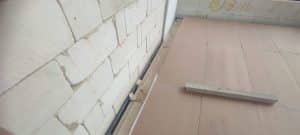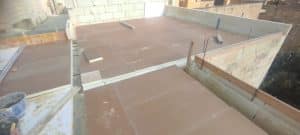When you’re planning a renovation in Malta—whether for your home, office, or commercial space—you’re bound to face one big question: Is microcement more expensive than tiles? At first glance, microcement might seem like a splurge. But is it really?
Let’s break down the pricing, value, and performance of microcement versus traditional tiling so you can decide what truly works for your budget and design vision.
What is Microcement, and Why Is It So Popular?| Is Microcement More Expensive Than Tiles
Microcement is a decorative coating composed of cement, water-based resins, pigments, and additives. Applied in thin layers (around 2–3 mm thick), it creates a seamless, modern finish ideal for both floors and walls. You can use it in bathrooms, kitchens, hallways, exteriors—even furniture!
So why are more people in Malta choosing microcement?
Because it’s:
Seamless (no grout lines = easy cleaning)
Stylish (minimalist, industrial, or Mediterranean vibes)
Versatile (indoor/outdoor, floors/walls)
Customisable (texture, colour, finish)
Durable and waterproof when sealed correctly
Yet, these advantages come with a price—and that’s where the debate begins.
Comparing Costs: Is Microcement More Expensive Than Tiles?| Is Microcement More Expensive Than Tiles
Let’s get straight to the question: Is microcement more expensive than tiles?
The short answer: Yes—but only slightly.
Price Breakdown (Malta-Specific)
Here’s a general price comparison for the Maltese market:
| Material/Service | Cost per m² (approx.) |
|---|---|
| Basic ceramic tiles | €20 – €40 |
| High-end tiles | €50 – €100+ |
| Microcement | €65 – €100+ |
As you can see, microcement starts at around €65 per square metre, while basic tiles can be as low as €20 per m². But here’s the catch—price per m² doesn’t always tell the whole story.
What Affects the Final Cost?
Several factors can influence your final bill:
Preparation & substrate: If tiles need to be removed or levelled, this adds to the cost. Microcement, however, can be applied directly over existing tiles—saving demolition costs.
Application process: Microcement requires skilled, manual layering. It’s labour-intensive and demands attention to detail. You’re paying for craftsmanship.
Sealing & finishing: Proper sealing is essential for durability. With tiles, grout sealing may also be required—especially in wet areas.
So while the material cost of microcement is slightly higher, the total project cost may even out due to fewer layers and less demolition work.
Performance & Longevity: You Get What You Pay For| Is Microcement More Expensive Than Tiles
Let’s be real. Choosing materials based on cost alone doesn’t give you the full picture. So how do microcement and tiles compare in terms of long-term value?
Durability
Microcement: Highly durable when correctly applied and sealed. It resists scratches, wear, and moisture. Perfect for high-traffic areas.
Tiles: Also very durable—but grout can deteriorate or stain over time. Cracked tiles are hard to repair individually without visible difference.
Maintenance
Microcement: Super easy to clean—no joints, no mildew. Just soap and water. A specialized cleaner can also extend its life.
Tiles: Regular cleaning needed. Grout lines can collect dirt and discolour unless cleaned and resealed often.
Aesthetic Lifespan
Trends come and go, but microcement’s minimalist appeal has proven timeless. Tiles, on the other hand, can quickly date a space—especially patterned or coloured ones.
So even if microcement is more expensive than tiles upfront, it may cost less over time in repairs, updates, and maintenance.
When Is It Worth Paying More for Microcement?| Is Microcement More Expensive Than Tiles
Here’s when choosing microcement makes more sense—even if it’s a little pricier:
1. You Want Seamless Elegance
With no grout lines or tile breaks, microcement delivers a sleek and continuous finish that tiles simply can’t match.
2. You Have Uneven or Mixed Surfaces
Microcement can go over a wide range of substrates—tiles, concrete, plaster, even wood (if properly prepared). That saves on stripping and re-levelling.
3. You Value Hygiene
In places like bathrooms or commercial kitchens, fewer seams = fewer bacteria traps. Microcement is often preferred in professional and medical settings for this reason.
4. You Need Customisation
Want a soft matte finish in terracotta tones for your Gozo holiday home? Or a concrete-style wall for your Valletta office? Microcement gives you full control over colour, texture, and finish.
5. You’re Going for Underfloor Heating
Microcement has fantastic thermal conductivity, making it an ideal companion for underfloor heating systems—a common request in Malta’s cooler months.
Installation Time: Another Cost Factor| Is Microcement More Expensive Than Tiles
Let’s talk timelines.
Tiles:
Typically take 3–5 days, including preparation, installation, and grout curing.
Add more time if the surface needs levelling or removal of old tiles.
Microcement:
Takes 4–7 days depending on the number of layers and sealing coats.
However, no need to demolish tiles, which can save a couple of days and costs.
Although timelines are similar, microcement’s non-invasive installation makes it faster when you’re working with existing surfaces.
Real-Life Examples in Malta| Is Microcement More Expensive Than Tiles
To give this more context, here are two quick examples:
Example 1: Residential Bathroom Renovation in Sliema
The client wanted to upgrade an outdated tiled bathroom to a sleek, spa-like feel. Instead of removing the old tiles, we applied microcement directly over them. The total cost was about €3,200 for 40 m², slightly higher than a tiled option—but saved nearly €900 in demolition and disposal costs.
Example 2: Outdoor Kitchen in Mellieħa
Durability and weather-resistance were key. While tiles offered a cheaper upfront solution, the homeowner chose microcement for its modern finish and heat tolerance. Maintenance was also a concern—grout can get moldy outside. The investment? Around €5,000 for 70 m², including custom colours and waterproofing.
The Design Edge: Tiles vs Microcement| Is Microcement More Expensive Than Tiles
Design is where microcement often shines.
Tiles:
Available in many styles, patterns, and sizes
Good for traditional or rustic homes
Grout can break up the visual flow
Microcement:
Customisable colours and finishes
Minimalist, modern, or Mediterranean vibes
Creates a unified look across floors, walls, stairs, or countertops
If your goal is to make your home feel bigger, brighter, and more open, microcement’s seamless surface helps eliminate visual clutter.
A Note on Sustainability| Is Microcement More Expensive Than Tiles
In today’s world, sustainability matters.
Microcement uses fewer materials than tiles, especially when you don’t need demolition. There’s less waste, fewer transport needs, and minimal thickness means it’s more resource-efficient.
That makes it a smart choice for eco-conscious Maltese homeowners and developers looking to reduce their construction footprint.
The Long-Term Value of Microcement in Malta Homes
While the upfront cost of microcement may slightly surpass that of standard tiles—typically around €65 to €100 per square metre, compared to €40 to €90 per square metre for mid-range tiles—it’s crucial to look beyond just materials and labour. In Malta’s humid and coastal environment, microcement offers long-term value through its durability, low maintenance, and seamless application.
Tiles can crack, especially with structural movement or moisture issues, leading to retiling costs and potential water damage over time. Microcement, when professionally installed, adapts more easily to minor substrate shifts and forms a continuous, non-porous surface—reducing the risk of mould, bacteria, or tile lifting.
So, is microcement more expensive than tiles in the long run? The answer often flips: no, it could be more cost-effective.
Hidden Savings:
No grout to clean or replace.
No demolition if applied over existing surfaces.
No recurring sealing or polishing required.
Fewer repair costs compared to cracked or chipped tiles.
Comparing Installation and Labour Costs
One factor that impacts the answer to “is microcement more expensive than tiles?” is labour complexity.
Tile installation involves:
Surface preparation
Tile layout and cutting
Adhesive application
Grouting
Cleaning and finishing
Microcement, on the other hand, involves:
Surface priming
Application of multiple thin layers
Smoothing, drying, and curing
Sealing for protection
Although microcement requires skilled craftsmanship and more drying time, it is often faster overall because it avoids tile cutting, grouting, and heavy demolition. In renovations, this can significantly reduce disruption and cleanup costs.
In Malta, experienced microcement professionals typically charge around €25–€40 per hour, while tile setters range from €15–€30 per hour, depending on complexity. However, microcement installers may finish the project faster, especially when working over existing surfaces like tiles or concrete, so labour hours could balance out.
Design Flexibility: Why Microcement Justifies Its Cost
Another reason homeowners don’t mind paying a bit more for microcement is the design freedom it offers. It’s not just a surface—it’s a customisable finish. You can choose:
Texture: matte, satin, or gloss
Colour: from cool cement greys to warm earthy tones
Application: walls, floors, countertops, stairs, showers, and furniture
Tiles, in contrast, limit you to predefined shapes and grout lines. Microcement is seamless and modern, lending itself to:
Minimalist interiors popular in Malta’s new builds
Luxury bathrooms and wet rooms
Elegant commercial spaces
Plus, when you’re building or renovating, fewer materials mean fewer coordination headaches. Microcement creates flow and visual continuity throughout different zones—an aesthetic and spatial advantage tiles can’t match.
Real-Life Scenarios: When Microcement Is Worth the Price
Let’s say you’re renovating a kitchen floor in Sliema. You already have old tiles, and you’re weighing the cost between ripping them out to lay new ones, or applying microcement on top.
Option 1: Retiling
Tile removal & disposal: €10–€15/m²
New tile installation: €40–€90/m²
Labour: €15–€30/hr
Total estimated cost: €75–€140/m²
Option 2: Microcement Over Existing Tiles
Microcement materials: €65–€100/m²
Labour: €25–€40/hr
No demolition needed
Total estimated cost: €65–€110/m²
Suddenly, microcement is not more expensive than tiles—in fact, it might save you money, while offering a superior look and lower maintenance.
And because it’s applied directly over the old tiles, you’ll avoid construction noise, dust, and delays. That’s a huge advantage for Malta residents living in apartment blocks or heritage buildings, where permits and demolition work can be costly or restricted.
Is Microcement Right for Your Space?
Let’s recap where microcement outshines tiles—even if the price is slightly higher at first:
| Feature | Microcement | Tiles |
|---|---|---|
| Seamless Finish | ✅ Yes | ❌ No |
| Grout-Free Maintenance | ✅ Yes | ❌ No |
| Can Be Applied Over Tiles | ✅ Yes | ❌ No (requires demolition) |
| Waterproof Surface | ✅ Yes | ✅ Only with grout sealing |
| Cracking Risk | ⚠️ Low (with flexible base) | ⚠️ Moderate to high |
| Custom Design Options | ✅ Unlimited colours/textures | ⚠️ Limited to manufacturer lines |
| Long-Term Value | ✅ High | ⚠️ Varies |
| Estimated Cost in Malta | €65–€110/m² | €75–€140/m² (including removal) |
What Professionals Say: Microcement in the Maltese Climate
Malta’s climate is humid, salty, and variable, particularly in coastal towns like St. Julian’s or Marsaskala. These conditions demand materials that:
Resist moisture
Can be cleaned easily
Don’t expand and contract excessively
Offer longevity with minimal maintenance
Microcement scores high across all these points. Tiles can suffer from loose grout, water infiltration, or mildew in high-moisture spaces like bathrooms, balconies, or pool decks. Meanwhile, microcement is resistant to thermal shock and humidity, especially when installed by trained professionals and sealed correctly.
Plus, its application to vertical surfaces—like shower walls or kitchen backsplashes—makes it more versatile than tiles. Fewer joints = fewer weak points = better performance in Malta’s coastal homes.
Still Wondering: Is Microcement More Expensive Than Tiles?
Here’s the bottom line:
If you’re only comparing base material costs, microcement might be a touch more expensive than tiles.
But when you factor in demolition, maintenance, versatility, and design value, microcement often comes out ahead.
So while the question “is microcement more expensive than tiles” has a nuanced answer, many Malta homeowners and developers are embracing microcement as a modern, durable, and smart alternative.
Final Thoughts & How to Get Started
Choosing between microcement and tiles depends on your budget, design goals, and long-term plans. If you’re after a seamless, stylish, and durable solution that offers minimal maintenance and maximum versatility, then microcement is well worth considering.
Want to see how much it would cost for your specific space? Or explore the colour and texture options?
👉 Contact us now at Kibitec for a free consultation or a quote tailored to your Malta property.
BONUS: Learn More About the Role of Construction Finishes
To better understand how microcement fits into modern building practices, read more about construction methods and finishing materials on Wikipedia.




